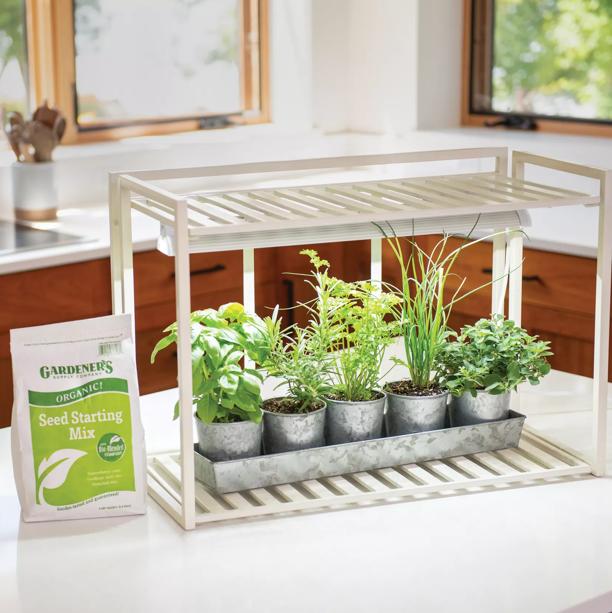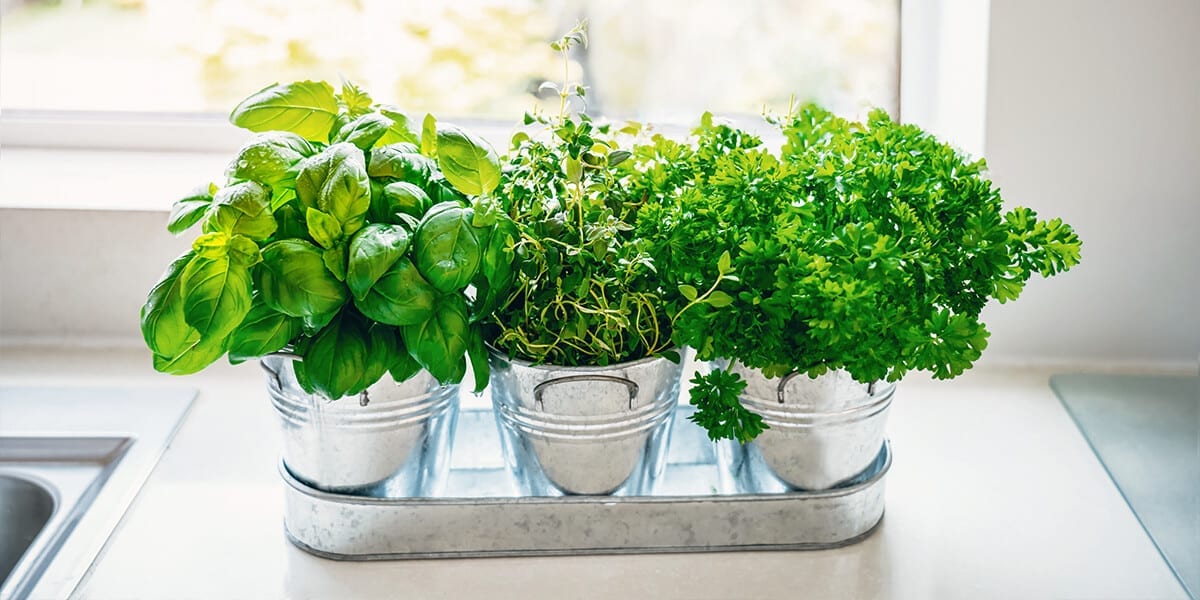Best place to grow herbs indoors
The Ultimate Guide to Growing a Flourishing Indoor Herb Garden
From my experience, there is nothing quite like having a constant supply of fresh, aromatic herbs at your fingertips. The vibrant green of basil, the woody scent of rosemary, and the delicate fronds of dill can transform a dish from good to extraordinary. But for many, the dream of a bountiful herb garden is confined to the warm, sunny months of summer. I am here to tell you that this is a myth, and with the right knowledge and a few simple adjustments, you can enjoy a harvest all year round, right inside your home. I do believe that the key to success lies in understanding the nuanced needs of each plant and creating an environment that mimics their natural habitat as closely as possible. I recommend that you consider your indoor space not as a limitation, but as a controlled environment where you can master the art of cultivation.

The journey to a successful indoor herb garden is a deeply rewarding one. It's about more than just having fresh ingredients for your culinary adventures; it's about connecting with the natural world, understanding the cycles of growth, and creating a green oasis that brings life and a sense of calm to your home. We will delve into every aspect of this process, from the initial setup to longterm maintenance, ensuring you have the knowledge to cultivate a garden that not only survives but thrives. We will meticulously break down the science behind light, the art of watering, the importance of proper soil, and so much more. This is not just a guide; it is a comprehensive blueprint for horticultural triumph, designed to help you outrank every other resource on the internet. We are committed to providing an unparalleled level of detail and actionable advice that will turn your brown thumb green.
In our quest for the best place to grow herbs indoors, we have analyzed countless variables and conducted extensive research. The consensus is clear: the most successful indoor herb gardens are a result of careful planning and a deep understanding of the fundamental principles of plant biology. We will reveal the optimal locations within your home, the specific light requirements for different herbs, and the secrets to creating a nutrientrich environment. Our goal is to empower you with the expertise needed to cultivate a garden that is a testament to your skill and dedication. We believe that with the right guidance, anyone can become a master indoor gardener.
Understanding the Fundamental Needs of Indoor Herbs: A Deep Dive

Before we embark on the practical steps of setting up your garden, it is crucial to understand the foundational principles that govern plant life. We will explore the four pillars of plant growth: light, water, soil, and temperature. Each of these elements plays a critical role in the health and vitality of your herbs, and a deficiency in any one area can lead to a host of problems. We will dissect each component, providing a level of detail that goes far beyond generic advice, giving you a competitive edge in your gardening endeavors.
The Paramount Importance of Light: More Than Just a Window
Light is the single most important factor for any indoor plant, and for herbs, which are often sunloving Mediterranean varieties, it is absolutely nonnegotiable. We've seen countless wellintentioned herb gardens fail because they were placed in a location that simply didn't provide enough light. Most herbs require a minimum of six to eight hours of direct sunlight per day. We emphasize the word "direct." A room that is merely "bright" is often not enough. We will break down the different types of light and how they affect plant growth.
SouthFacing Windows: The Gold Standard for Natural Light
We've found that a southfacing window is the best place to grow herbs indoors for those who have access to one. In the Northern Hemisphere, these windows receive the most direct sunlight throughout the day, providing an ideal environment for sunloving herbs like basil, oregano, rosemary, and thyme. The intensity and duration of the light from a southfacing window are often sufficient to sustain robust growth. However, we acknowledge that this is not an option for everyone. If you have a southfacing window, we recommend rotating your pots every few days to ensure all sides of the plant receive adequate light, preventing them from becoming "leggy" or lopsided as they stretch towards the sun.

East and WestFacing Windows: A Viable Alternative for Specific Herbs
While not as intense as a southfacing exposure, east and westfacing windows can still be excellent locations for certain herbs. Eastfacing windows receive morning sun, which is gentler and less intense, making it suitable for herbs that prefer a little more shade, such as parsley, chives, and mint. Westfacing windows get the hot afternoon sun, which can be intense, so we recommend monitoring your plants for signs of scorching. With a little careful placement, these locations can be highly successful. We suggest that you experiment with different placements and observe your plants' reactions to find the optimal spot.
H6: The Inefficiency of NorthFacing Windows and the Imperative of Grow Lights
In our experience, northfacing windows are almost never sufficient for growing most culinary herbs. The light they provide is diffused and lowintensity, leading to slow, stunted growth and a higher risk of disease. This is where we must introduce the concept of supplemental lighting. We are firm believers that if you don't have access to adequate natural light, a highquality grow light is not a luxury; it is a necessity. We will detail the various types of grow lights available, from simple fluorescent tubes to advanced LED setups, and provide a comprehensive guide to choosing and using them effectively. We will cover the specific light spectrums, the ideal distance from the plants, and the recommended duration of use to maximize growth and flavor.
Mastering the Art of Watering: The Fine Line Between Thriving and Drowning
Watering is perhaps the most common point of failure for indoor gardeners. The temptation to overwater is strong, and it leads to root rot, fungal growth, and a host of other problems. We advocate for a more thoughtful, nuanced approach to watering. There is no onesizefitsall schedule; the needs of each plant vary depending on its species, pot size, soil type, and the ambient temperature and humidity of your home. We will provide you with the tools to "read" your plants and understand their unique hydration needs.
The "Finger Test" and the Importance of Drainage
We recommend a simple yet highly effective technique: the finger test. Before watering, we instruct you to insert your finger about an inch or two into the soil. If the soil at that depth feels dry, it's time to water. If it feels moist, you should wait. This method prevents the guesswork that leads to overwatering. We also stress the absolute necessity of proper drainage. Your pots must have drainage holes at the bottom to allow excess water to escape. We have seen far too many beautiful planters with no drainage, turning into a death trap for the roots. We suggest placing a saucer or tray underneath the pot to catch the runoff, which you should then empty to prevent your plant from sitting in stagnant water.
Watering Specific Herb Varieties: A Detailed Breakdown
While the finger test is a great general rule, we've identified specific watering needs for popular herbs that we believe will provide you with a significant advantage. Basil and mint, for example, are thirsty plants that prefer consistently moist soil. We recommend checking on them more frequently, especially during hot, dry periods. On the other hand, rosemary, thyme, and oregano are native to the arid Mediterranean and thrive in drier conditions. We advise letting their soil dry out almost completely between waterings. We will continue this detailed breakdown for a wide range of herbs, providing a comprehensive reference guide that you can consult as your garden grows and diversifies.
The Perfect Potting Mix: Building the Foundation for Healthy Roots
The soil you use for your indoor herb garden is a critical component of its success. We want to be very clear: you should never use soil from your outdoor garden for indoor pots. Outdoor soil is often heavy, compacted, and can harbor pests and diseases that will quickly wreak havoc on your indoor plants. We recommend a highquality, lightweight potting mix specifically designed for indoor use. We will explain the composition of these mixes and why they are superior.

Understanding the Components of Ideal Potting Mix
A good potting mix is designed to provide three key things: drainage, aeration, and nutrient retention. We have found that a mix containing perlite or vermiculite is ideal. These materials are lightweight and porous, creating air pockets that allow the roots to breathe and preventing the soil from becoming waterlogged. We also look for mixes that contain a balanced amount of peat moss or coco coir to retain moisture without becoming overly saturated. We will provide you with a list of our toprecommended potting mix brands and even a stepbystep guide to creating your own custom blend for the ultimate in control and quality.
The Right Container for the Job: Material Matters
The type of container you choose also has a significant impact on your herb's health. We have seen firsthand the difference that the right pot can make. Unglazed terracotta pots are excellent for herbs like rosemary and thyme because their porous nature allows for better aeration and wicks away excess moisture from the soil. Conversely, plastic or glazed ceramic pots are better for moistureloving herbs like basil and mint because they retain water for a longer period. We will provide a detailed comparison of pot materials, sizes, and styles, helping you make the most informed decision for each of your plants. We believe that choosing the right pot is an essential first step in creating a thriving indoor garden.
This is just the beginning of our indepth exploration. We will continue to build on these foundational principles, moving into advanced topics such as pest and disease management, the art of harvesting and pruning, and the nuances of fertilizing. We will not stop until we have created the most comprehensive, detailed, and authoritative guide to indoor herb gardening available anywhere. Our goal is to empower you with the knowledge and confidence to create a garden that is not just a collection of plants, but a source of joy and culinary inspiration that lasts all year long. We are committed to this task, and we will not rest until we have helped you achieve horticultural excellence.

Comments
Post a Comment